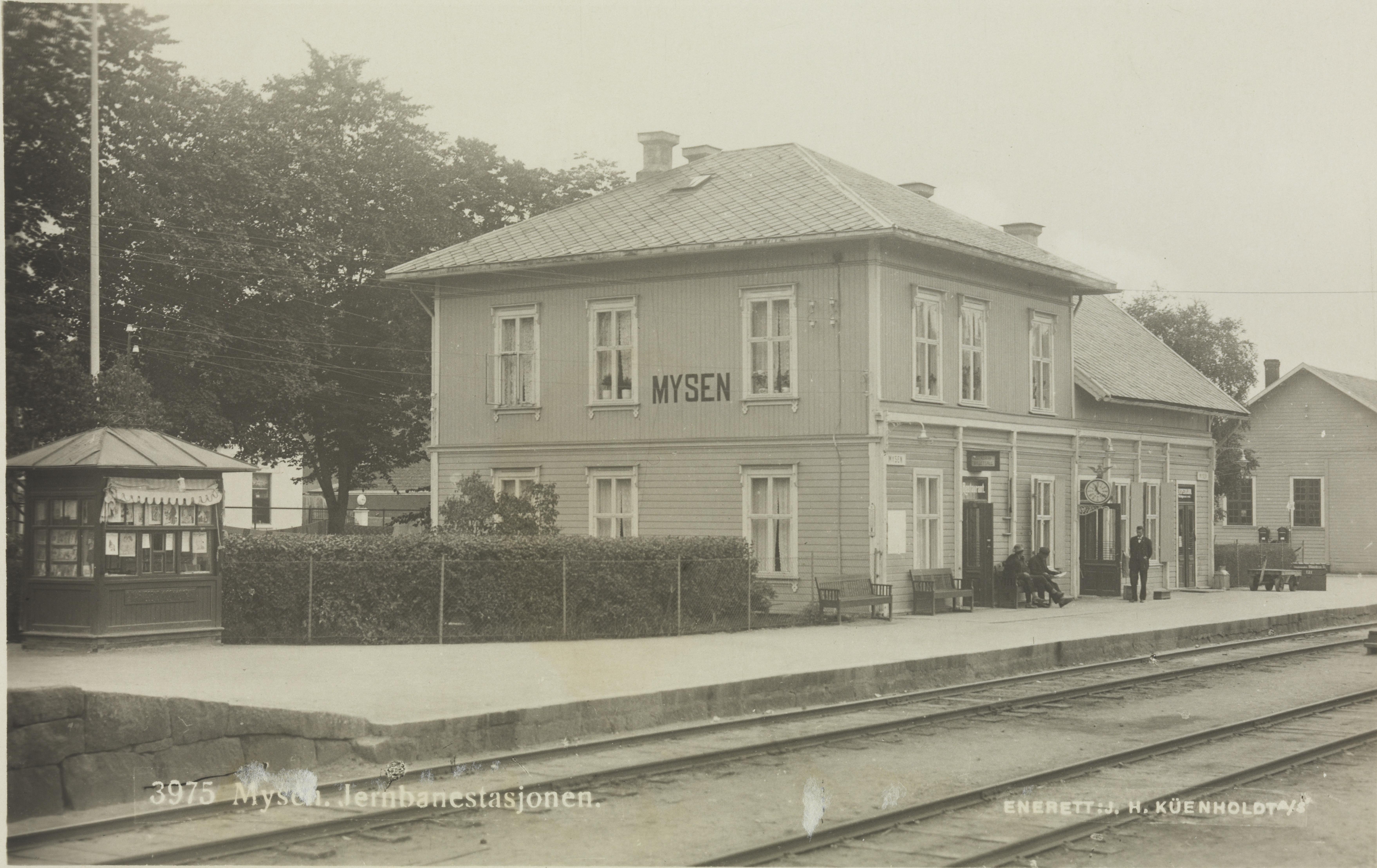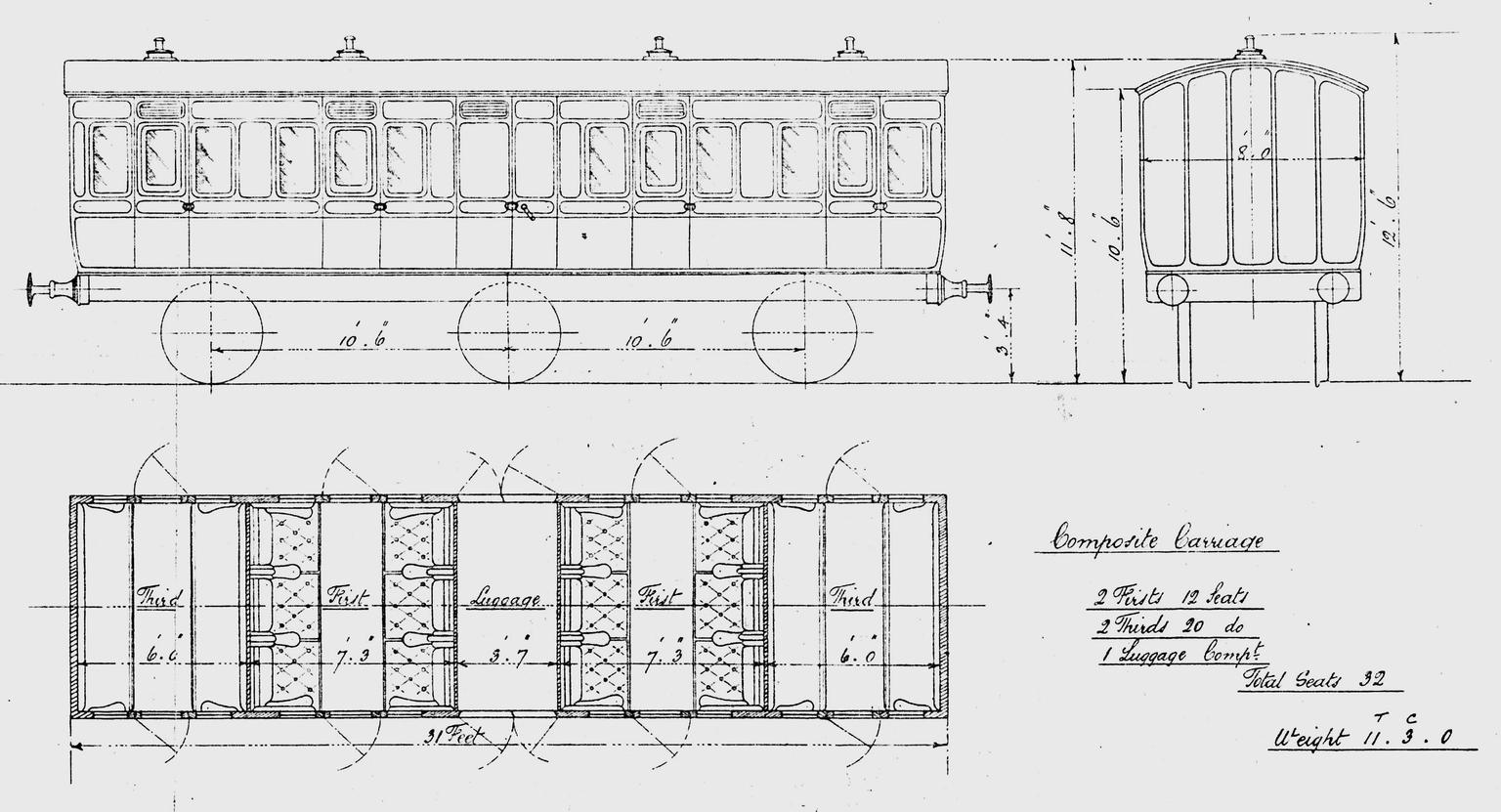|
Solbergfoss Line
The Solbergfoss Line ( no, Solbergfossbanen) was a railway line which ran from Askim Station to Solbergfoss Power Station, entirely in Askim, Norway. The single-track, standard gauge railway was an industrial railway operated by the power station owned by Oslo Lysverker and the Norwegian Water Resources and Energy Directorate. The line was completed in 1918. It was originally planned to be demolished in 1922, but the passenger trains proved popular and it continued in use until 1965. From 1928 it was served using railcars. The tracks were demolished in 1970 Route The Solbergfoss Line ran from Askim Station to Solbergfoss, entirely located within the municipality of Askim. The Line was long, branching off from the Eastern Østfold Line. The line was standard gauge, but never equipped with a signaling system. The line did not have any stations, only four flag stops in addition to Askim Station.Bjerke & Holom: 287 As the line was planned to be temporary, it received a lo ... [...More Info...] [...Related Items...] OR: [Wikipedia] [Google] [Baidu] |
Rail Transport In Norway
The Norwegian railway system comprises 4,109 km of (standard gauge) track of which 2,644 km is Railway electrification system, electrified and 274 km double track. There are 697 tunnels and 2,760 bridges. The Norwegian Railway Directorate manages the railway network in Norway on behalf of the Ministry of Transport and Communications (Norway), Ministry of Transport and Communications. Bane NOR is a Statsforetak, state enterprise which builds and maintains all rail transport, railway tracks, while other companies operate them. These companies include Vy (transport operator), Vy and subsidiaries Vy Gjøvikbanen and CargoNet, Flytoget, Go-Ahead Norge, Go-Ahead, SJ Norge, Green Cargo, Grenland Rail and Hector Rail. Norway is a member of the International Union of Railways (UIC). The UIC Country Code for Norway is 76. History The first railway in Norway was the Hoved Line between Oslo and Eidsvoll and opened in 1854. The main purpose of the railway was to move lu ... [...More Info...] [...Related Items...] OR: [Wikipedia] [Google] [Baidu] |
Mysen Station
Mysen Station ( no, Mysen stasjon) is a railway station located at Mysen in Eidsberg, Norway. Situated from Oslo Central Station (Oslo S), it is served hourly by the L22 service of the Oslo Commuter Rail. It is the terminus of most L22 services. The station had 251,000 boarding and disembarking passengers in 2012. The station opened on 24 November 1882 with a station building designed by Balthazar Lange in Swiss chalet style. The town of Mysen grew up around the station, and soon features the municipal center, shopping and industry. A grain elevator was built in 1953. The original station was demolished in 1986 to make way for a building complex. The station platforms were modernized in 2014. History Discussion of a railway through Eidsberg was first debated in the municipal council on 5 January 1867. The municipality approved a grant of 20,000 Norwegian speciedaler on 25 January 1873. After it was decided in 1873 that the Østfold Line was to be built, the main route contr ... [...More Info...] [...Related Items...] OR: [Wikipedia] [Google] [Baidu] |
Royal Bavarian State Railways
The Royal Bavarian State Railways (''Königliche Bayerische Staats-Eisenbahnen'' or ''K.Bay.Sts.B.'') was the state railway company for the Kingdom of Bavaria. It was founded in 1844. The organisation grew into the second largest of the German state railways (after that of the Prussian state railways) with a railway network of 8,526 kilometres (including the Palatinate Railway or ''Pfalzbahn'') by the end of the First World War. Following the abdication of the Bavarian monarchy at the end of the First World War, the 'Royal' title was dropped and on 24 April 1920 the Bavarian State Railway (''Bayerische Staatseisenbahn''), as it was now called, was merged into the newly formed German Reich Railways Authority or Deutsche Reichseisenbahnen as the Bavarian Group Administration (''Gruppenverwaltung Bayern''). The management of the Bavarian railway network was divided into four Reichsbahn divisions: Augsburg, Munich, Nuremberg and Regensburg. The former Palatinate Railway formed the ... [...More Info...] [...Related Items...] OR: [Wikipedia] [Google] [Baidu] |
Bavarian D IV
The little D IV was one of the most frequently seen tank locomotives in the stations of the Royal Bavarian State Railways (''Königlich Bayerische Staatsbahn''). The Deutsche Reichsbahn took over almost all of them, 124 in total, of which 24 were from the Palatinate (''Pfalz''). See also * Royal Bavarian State Railways * List of Bavarian locomotives and railbuses A ''list'' is any set of items in a row. List or lists may also refer to: People * List (surname) Organizations * List College, an undergraduate division of the Jewish Theological Seminary of America * SC Germania List, German rugby uni ... References * * 0-4-0T locomotives D 04 Standard gauge locomotives of Germany Krauss locomotives Maffei locomotives Railway locomotives introduced in 1878 B n2t locomotives {{Germany-rail-transport-stub Shunting locomotives ... [...More Info...] [...Related Items...] OR: [Wikipedia] [Google] [Baidu] |
Heritage Railway
A heritage railway or heritage railroad (US usage) is a railway operated as living history to re-create or preserve railway scenes of the past. Heritage railways are often old railway lines preserved in a state depicting a period (or periods) in the history of rail transport. Definition The British Office of Rail and Road defines heritage railways as follows:...'lines of local interest', museum railways or tourist railways that have retained or assumed the character and appearance and operating practices of railways of former times. Several lines that operate in isolation provide genuine transport facilities, providing community links. Most lines constitute tourist or educational attractions in their own right. Much of the rolling stock and other equipment used on these systems is original and is of historic value in its own right. Many systems aim to replicate both the look and operating practices of historic former railways companies. Infrastructure Heritage railway lines ... [...More Info...] [...Related Items...] OR: [Wikipedia] [Google] [Baidu] |
Krøderen Line
, logo = , logo_width = , logo_alt = , image_name =Krøderbanen - 2006-07-16.jpg , image_width = , image_alt = , caption = Loco 236 at Krøderen, 16 July 2006 , color = , locale = Norway , terminus = Vikersund Krøderen , map = , map_caption = , map_alt = , mapsize = , connections = , linename = , builtby = Norwegian State Railways , originalopen = 28 November 1872 , originalgauge = , originalelec = None , owned = Krøderen Line Foundation , operator = Norwegian Railway Club , marks = , stations = 6 , length = , preservedgauge = , preservedelec = None , era = , com-years = , com-events = , com-years1 = , com ... [...More Info...] [...Related Items...] OR: [Wikipedia] [Google] [Baidu] |
Norwegian Railway Club
The Norwegian Railway Club ( no, Norsk Jernbaneklubb) is an association which is involved in the preservation of Norwegian museum railways. NMT has its operating base at Hønefoss Station in Ringerike, Norway. The society was founded on 22 May 1969, and is based at Bryn Station in Oslo, but with local groups all over the country. It publishes the magazine ''På Sporet'' four times a year, as well as publishing numerous books. The club also operates two heritage railways, the Old Voss Line in Bergen, and the Krøder Line. Most of the work is done by volunteers. The Norwegian Railway Club runs Norwegian Heritage Trains or NMT (''Norsk Museumstog''). All the members of NMT are volunteers and their classic train activities are under government supervision. NMT is doing restoration, preservation and operation of classic trains at the part of the Norwegian railway network. The activity of NMT is not run for the purpose of profit. All income of the activity is solely used for the p ... [...More Info...] [...Related Items...] OR: [Wikipedia] [Google] [Baidu] |
Derailment
In rail transport, a derailment occurs when a rail vehicle such as a train comes off its rails. Although many derailments are minor, all result in temporary disruption of the proper operation of the railway system and they are a potentially serious hazard. A derailment of a train can be caused by a collision with another object, an operational error (such as excessive speed through a curve), the mechanical failure of tracks (such as broken rails), or the mechanical failure of the wheels, among other causes. In emergency situations, deliberate derailment with derails or catch points is sometimes used to prevent a more serious accident. History The first recorded train derailment in history is known as the Hightstown Rail Accident in New Jersey that occurred on November 8, 1833. The train was traveling between Hightstown and Spotswood New Jersey and derailed after an axle broke on one of the carriages as a result of a journal box catching fire. The derailment resulted in ... [...More Info...] [...Related Items...] OR: [Wikipedia] [Google] [Baidu] |
På Sporet
''På Sporet'' (lit. 'On the Track') is a quarterly magazine published by the Norwegian Railway Club. The magazine was started in 1969. It is dominated by news and feature articles about domestic trains and rail transport Rail transport (also known as train transport) is a means of transport that transfers passengers and goods on wheeled vehicles running on rails, which are incorporated in tracks. In contrast to road transport, where the vehicles run on a p ..., but also has a limited amount of international news and features. References External linksIndex of all issues 1969 establishments in Norway Magazines established in 1969 Norwegian-language magazines Rail transport magazines published in Norway Quarterly magazines published in Norway {{Norway-mag-stub ... [...More Info...] [...Related Items...] OR: [Wikipedia] [Google] [Baidu] |
NSB Class 9
NSB may refer to: Art, entertainment, and media * Natural Snow Buildings, a French experimental music duo *Nihilist Spasm Band, Canadian free improvisation musical collective *Nu skool breaks, a subgenre of breakbeat music originating during the period between 1998 and 2002 *''Nature Structural & Molecular Biology'', an academic journal *Nippon Shortwave Broadcasting (now Radio Nikkei), a domestic commercial shortwave radio station in Japan Politics and government *FBI National Security Branch, the United States Federal Bureau of Investigation's branch responsible for investigating threats to national security *National Seamen Board of the Philippines *National Science Board, the governing body of the National Science Foundation *National Security Bureau (Republic of China), the intelligence agency of the Republic of China (Taiwan) *National Socialist Bloc, an historical political movement in Sweden *National Socialist Movement in the Netherlands (''Nationaal-Socialistische Bewegin ... [...More Info...] [...Related Items...] OR: [Wikipedia] [Google] [Baidu] |
Norwegian State Railways (1883–1996)
The Norwegian State Railways ( no, Norges Statsbaner or NSB) was a state-owned railway company that operated most of the railway network in Norway. The government agency/directorate was created in 1883Historisk oversikt Norwegian National Rail Administration to oversee the construction and operation of all state-owned s in . On 1 December 1996, it was to create the infrastructure operator |
Compartment Coach
A compartment coach is a railway passenger coach (US: passenger car) divided into separate areas or compartments, with no means of moving between compartments. The compartment coach should not be confused with the corridor coach which also has separate compartments but, by contrast, has a corridor down one side of the coach interior onto which the compartment doors open. English origins Originally compartment coaches were passenger coaches with several separate compartments in the same coach body, each compartment having its own doors on the side of the coach to enable passengers to board and alight. The compartment coach was developed at the very beginning of the railway era in England simply by placing a post coach body on a railway undercarriage. Compartment coaches were used across almost the whole of Europe and were built right up to the 1930s. On the European continent they were sometimes referred to as ''English coaches'' or coaches built to the ''English system''. E ... [...More Info...] [...Related Items...] OR: [Wikipedia] [Google] [Baidu] |




.jpg)

